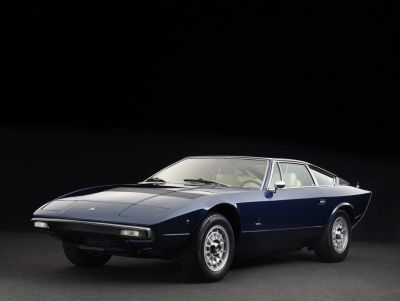 1990 Honda NSX I Coupe Dimensions, Size & Specs
1990 Honda NSX I Coupe Dimensions, Size & SpecsMeasurements of the 1990 Honda NSX I Coupe, engineered for optimal performance and comfort
| Dimensions | |
|---|---|
| Length: | 4405-4425 mm173.4-174.2 in14.5-14.5 ft |
| Width: | 1810 mm71.3 in5.9 ft |
| Height: | 1170 mm46.1 in3.8 ft |
| Trunk Capacity: | 154 liter5.4 cu ft |
| Trunk Capacity (Max): | 154 liter5.4 cu ft |
| Weight Specifications | |
| Curb Weight: | 1370-1450 kg3020-3197 lbs |
| Maximal permitted Weight: | 1610-1630 kg3549-3594 lbs |
| Tire Specifications | |
| Tire Sizes: |
|
The Honda NSX I Coupe, produced from 1990 to 2002, is an exceptional sports car that combines sleek design with precise engineering. This generation of the NSX is notable for its balanced dimensions and performance-focused build. Measuring between 4405 mm to 4425 mm (173.4 to 174.2 inches) in length, 1810 mm (71.3 inches) in width, and standing at a low height of 1170 mm (46.1 inches), the NSX I Coupe presents a compact yet aggressive profile suited for sporty handling and aerodynamics. The vehicle's curb weight ranges from 1370 kg to 1450 kg (3020 to 3197 lbs), ensuring a lightweight structure for enhanced agility. Its maximum allowable weight is between 1610 kg and 1630 kg (3549 to 3593 lbs), accommodating passengers and cargo without compromising performance. Despite its sports car stature, the NSX I offers a practical luggage capacity of 154 liters (5.43 cubic feet), which remains consistent even when rear seats are folded, emphasizing its coupe-oriented design without a focus on expandable cargo space. Tire options for this generation include sizes 215/45 R17, 245/40 R17, 205/55 R16, and 225/50 R16, providing varied setups for grip and ride preferences. Overall, the Honda NSX I Coupe is a testament to Honda’s commitment to performance, precision, and style, making it a revered choice among sports car enthusiasts and collectors alike.
Discover the standout features that make the 1990 Honda NSX I Coupe a leader in its class
Have a question? Please check our knowledgebase first.
The Honda NSX I Coupe produced from 1990 to 2002 has an overall length ranging from 4405 mm to 4425 mm. In imperial units, this length equates to approximately 173.4 inches to 174.2 inches (around 14.45 feet to 14.52 feet). This length allows the car to maintain a low, sleek profile characteristic of sports coupes, enhancing aerodynamic efficiency and road presence. The slight variation in length across different models or trim levels is minimal but can be attributed to specific design updates or optional add-ons during its production period.
The width of the Honda NSX I Coupe is 1810 mm (approximately 71.26 inches or 5.94 feet). This width contributes to the vehicle's stable stance and excellent handling characteristics by giving it a broad footprint on the road. The broad width also allows for a relatively spacious cabin for a two-seater sports car, accommodating the driver and passenger comfortably while maintaining a balanced aerodynamic design. The wide track enhances cornering capabilities, stability at high speeds, and overall driving confidence.
The height of the Honda NSX I Coupe is just 1170 mm, which is about 46.1 inches or 3.84 feet. This low height gives the NSX its distinctive sleek and sporty appearance, contributing significantly to aerodynamics by reducing drag. The low center of gravity improves handling and stability, particularly during high-speed cornering. Additionally, the narrow profile enhances driver visibility and creates closer contact with the road, ensuring sportscar-like agility and responsiveness. Its low height also requires careful attention when maneuvering over speed bumps or steep driveways.
The curb weight of the Honda NSX I Coupe ranges from 1370 kg to 1450 kg (approximately 3,020 to 3,196 pounds). This relatively light weight for a mid-engine sports car helps the NSX deliver sharp acceleration, nimble handling, and improved fuel efficiency. The careful engineering and use of lightweight materials such as aluminum contribute to this favorable weight. The relatively low curb weight combined with balanced weight distribution helps enhance overall agility, braking performance, and driving enjoyment, distinguishing the NSX among its contemporaries.
The maximum allowable weight (gross vehicle weight rating) of the Honda NSX I Coupe ranges between 1610 kg and 1630 kg (about 3,549 to 3,594 pounds). This figure reflects the total weight that the vehicle can safely carry, including passengers, cargo, and fuel. It is essential for ensuring safe operation, optimal handling, and braking performance, as exceeding this weight limit could negatively affect these aspects. Staying within the maximum weight ensures the longevity of components like tires and suspension, maintaining the high-performance characteristics the NSX is known for.
The Honda NSX I Coupe offers a luggage capacity of 154 liters (approximately 5.44 cubic feet). Both with the rear seats folded or upright, the luggage space remains the same due to the car’s two-seat coupe design. While 154 liters is modest compared to regular sedans or SUVs, it is sufficient for a couple of small suitcases, gym bags, or day-trip necessities. For longer trips or more extensive cargo, the limited space might require packing efficiency or additional roof storage. Despite this, the storage is adequate for a sports car focused mainly on performance and driving experience rather than cargo capacity.
Yes, the Honda NSX I Coupe generally fits comfortably into a standard residential garage. Standard garage dimensions typically range around 2.4 meters (8 feet) wide by 5.5 to 6 meters (18 to 20 feet) long. With the NSX’s length between 4.405 and 4.425 meters (about 14.45 feet) and width of 1.81 meters (5.94 feet), it occupies less space than many modern larger vehicles, making parking straightforward in typical garages. The low height of 1.17 meters (3.84 feet) also creates ample vertical clearance. Overall, the NSX’s compact yet wide and low design makes it well-suited for standard garage spaces.
The Honda NSX I Coupe, introduced in 1990, was a groundbreaking model as it didn't have a direct Honda sports car predecessor of comparable scale and ambition. Unlike earlier models, such as the Honda CR-X or Prelude, which were smaller and less performance-oriented, the NSX was a direct competitor to exotic supercars with its mid-engine layout and advanced engineering. Its size, featuring a length around 4.4 meters and a low, wide stance, marked a significant step up in terms of sophistication, road presence, and aerodynamic design. Compared to smaller sport compacts from Honda, the NSX was larger, lighter, and focused intensely on delivering world-class supercar dynamics.
Compared to similar exotic sports cars from the 1990s like the Ferrari 348 or Porsche 911 (964), the Honda NSX I Coupe holds its own in terms of dimensions. Its length of around 4.4 meters (14.5 feet) is comparable to these rivals, offering a similar low and wide profile. The NSX’s width of 1.81 meters (5.94 feet) provides a stable footprint but is often slightly wider than some competitors, enhancing road grip. In terms of height, the NSX’s very low 1.17 meters (3.84 feet) stance contributed to improved aerodynamics and a striking appearance. Overall, the NSX balanced sportscar presence with practicality better than many of its peers.
The Honda NSX I Coupe used a variety of tire sizes during its production, including 215/45 R17, 245/40 R17, 205/55 R16, and 225/50 R16. These tire sizes were chosen to complement the vehicle's chassis and suspension tuning. Larger diameter tires with low profiles (such as the 17-inch variants) allowed for improved cornering grip and enhanced high-speed stability, critical for a sports car of this caliber. The staggered setup, with wider tires at the rear, helped in maintaining traction and balanced handling given the mid-engine layout. Overall, these tire sizes contributed greatly to the NSX’s reputation for delivering precise, confident driving dynamics.
Discover similar sized cars.

| Production: | 1973-1982 |
|---|---|
| Model Year: | 1974 |
| Length: | 4400 mm173.2 in |
| Width: | 1804 mm71.0 in |
| Height: | 1140 mm44.9 in |
